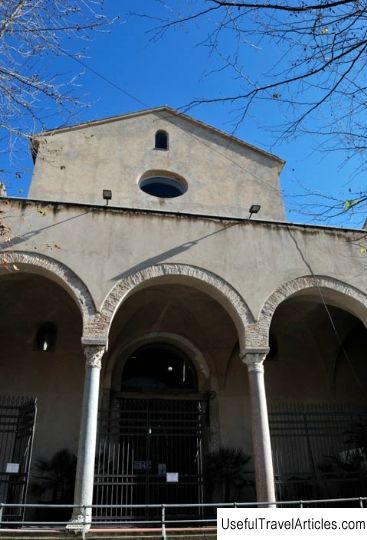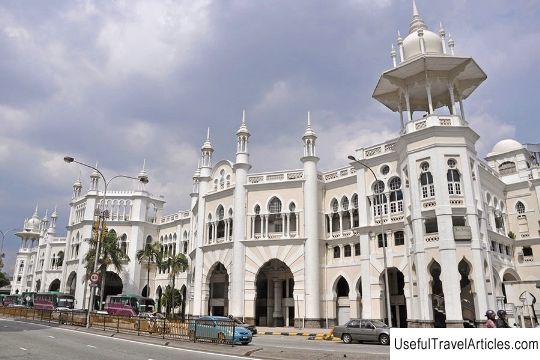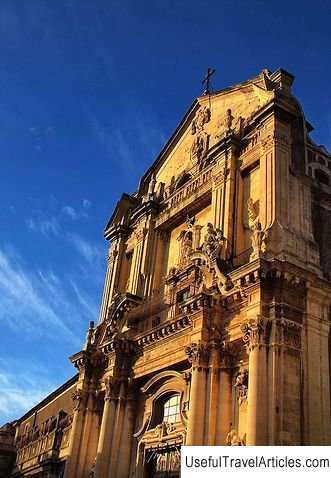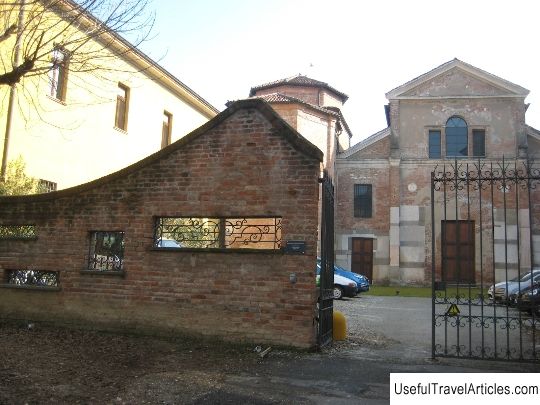Church of San Benedetto and Archaeological Museum (Chiesa di San Benedetto e Museo Archeologico) description and photos - Italy: Salerno

Church of San Benedetto and Archaeological Museum (Chiesa di San Benedetto e Museo Archeologico) description and photos - Italy: Salerno. Detailed information about the attraction. Description, photographs and a map showing the nearest significant objects. The title in English is Chiesa di San Benedetto e Museo Archeologico. Photo and descriptionThe Church of San Benedetto and the Archaeological Museum located in it is one of the main attractions of Salerno, located in the heart of the old part of the city. The church was once part of a monastery of the same name, founded between the 7th and 9th centuries. The church itself was built in the 11-13th centuries. After the abolition of the monastery in 1807, the building of San Benedetto was used as a theater venue. Today, on Via Arche, you can still see fragments of an ancient imposing aqueduct that in ancient times connected the church with the monastery. In 1927, the provincial archaeological museum was inaugurated with its rich collection of documents related to the province of Salerno from prehistoric times to the Middle Ages. It was originally housed in the building of the City Hall, but it was moved to the building of San Benedetto only in 1964. Within the walls of the museum, various artifacts are exhibited that testify to the historical evolution and cultural changes in the life of the city and its environs. In the garden and partly on the ground floor, there are Roman statues, graceful bas-reliefs, wall inscriptions, funeral urns discovered within Salerno from the 17th century to the present day. The first floor is dedicated to the earliest history of the city - it introduces the Paleolithic and Neolithic settlements in Polle, Pertosa, Palinuro, Molpe and Caprioli. Artifacts dating from the Eneolithic period have been found in the Fratte Archaeological Park. The Iron Age is represented by artifacts from the 9th-8th centuries BC, brought from Pontecanano and the Consilina Hall. You can also see finds in the museum, made inside a 5th century BC royal tomb, discovered in 1938 in Rosinho, are silver and bronze vases. The top floor of the museum displays artifacts relating to the history of the city of Salerno: from those found in the Fratte necropolis and dating from the 4th-5th centuries BC, to Roman and early medieval ones. Among the most notable exhibits of the museum are wonderful ceramics with geometric patterns in the ancient Greek style, ceramic pigeons - the symbol of Aphrodite, pottery, red antique vases. A real masterpiece is the Greek bronze head of Apollo, accidentally found by a fisherman in 1939. Also noteworthy is the collection of coins from the epoch of Ancient Greece, Ancient Rome and the Middle Ages. - these are silver and bronze vases. The top floor of the museum displays artifacts relating to the history of the city of Salerno: from those found in the Fratte necropolis and dating from the 4th-5th centuries BC, to Roman and early medieval ones.Among the most notable exhibits of the museum are wonderful ceramics with geometric patterns in the ancient Greek style, ceramic pigeons - the symbol of Aphrodite, pottery, red antique vases. A real masterpiece is the Greek bronze head of Apollo, accidentally found by a fisherman in 1939. Also noteworthy is the collection of coins from the epoch of Ancient Greece, Ancient Rome and the Middle Ages. - these are silver and bronze vases. The top floor of the museum displays artifacts related to the history of the city of Salerno: from those found in the Fratte necropolis and dating from the 4th-5th centuries BC, to Roman and early medieval ones.Among the most notable exhibits of the museum are wonderful ceramics with geometric patterns in the ancient Greek style, ceramic pigeons - the symbol of Aphrodite, pottery, red antique vases. A real masterpiece is the Greek bronze head of Apollo, accidentally found by a fisherman in 1939. Also noteworthy is the collection of coins from the era of Ancient Greece, Ancient Rome and the Middle Ages. p> Among the most notable exhibits of the museum are wonderful ceramics with geometric patterns in the ancient Greek style, ceramic pigeons - the symbol of Aphrodite, pottery, red antique vases. A real masterpiece is the Greek bronze head of Apollo, accidentally found by a fisherman in 1939. Also noteworthy is the collection of coins from the epoch of Ancient Greece, Ancient Rome and the Middle Ages. p> Among the most notable exhibits of the museum are wonderful ceramics with geometric patterns in the ancient Greek style, ceramic pigeons - the symbol of Aphrodite, pottery, red antique vases. A real masterpiece is the Greek bronze head of Apollo, accidentally found by a fisherman in 1939. Also noteworthy is the collection of coins from the epoch of Ancient Greece, Ancient Rome and the Middle Ages.        We also recommend reading Benedictine monastery Lambach (Stift Lambach) description and photos - Austria: Upper Austria Topic: Church of San Benedetto and Archaeological Museum (Chiesa di San Benedetto e Museo Archeologico) description and photos - Italy: Salerno. |




